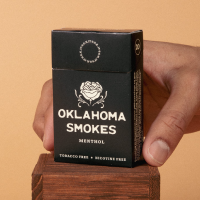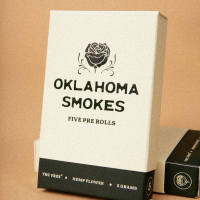With the push of the Go-Green Movement, the world's greatest minds have looked for alternatives to resources that take a lifetime to create. Trees used for paper products and building materials, even in the most ideal conditions can take up to 10 years to grow to a harvestable size.
In a world surrounded by the idea of disposable, this causes a constant cycle of growing and harvesting. But trees are large, and take a lot of room to grow and a lot of resources to harvest. We also rely on trees and wooded areas to support wildlife and provide fresh air.
So, what can we do differently? Enter industrial hemp.
What is Hemp?
Since hemp originates from the cannabis plant, the questions may arise: Will you get high from hemp? Isn't it weed?
With traces of hemp crops and hemp flower products being used widespread over the past thousands and thousands of years, confusion and misinformation over what hemp is and how it’s used has seemed to become widespread also.
From Sativa To Hemp
When looking at the cannabis sativa plant, you will find 2 main strains: Indica and Sativa. These names were first noted around the 18th century and referred to where the plant was grown, and how it was used.
Indica was the name given to marijuana grown in India, which growers bred to create high levels of a cannabinoid called tetrahydrocannabinol (THC)for psychoactive effects.
Sativa was cannabis grown throughout Europe, which was instead harvested for its fibers and oils. These plants were known to grow extremely large, often up to 14 feet tall, and produced virtually no THC. The fatty acid-rich seeds were harvested for cooking, and developed into current day hemp seed oil. The leaves were used for their fibers and were used to make everything from paper to early pottery. These plants were extremely hardy, able to grow in many climates across Europe.
Over time, the use of these hemp flower strains would change and evolve, ultimately changing what each name was known for. Modern Indica is known for its short height and dense flowers, giving psychoactive calming effects, while Sativa is known for uplifting spikes of energy, both mentally and physically.
Originally referred to as Sativa, hemp now refers to cannabis which is grown specifically for its large size, the harvest of plant fibers, and its high levels of cannabidiol, a non-psychoactive cannabinoid present in hemp buds, leaves, and stems.
To be considered hemp, a plant must produce THC content of less than 0.3% , and often lower depending on the country of production. To put that into perspective, "normal" weed smoked for its psychoactive effects often yields 10-35% THC. At 0.3%, even smokable hemp has no real risk of getting someone high or experiencing any negative effects associated with THC.
High quality hemp's high CBD levels on the other hand can provide whole-body soothing and emotional wellness benefits, whether in smoking hemp or extracting the CBD to put into CBD products such as tinctures or topical creams.
Early Uses For Hemp
Hemp products date back to nearly 10,000 years ago, at the time used in pottery, bags, and other everyday goods.
The first recorded growth and use of hemp as a crop can be found in Central Asia around 2800 BCE, where CBD-rich hemp was used not only for the fibers, but for the health benefits found in the oils. The seeds from the hemp plants are also packed with healthy fats, great for both skin care and dietary consumption.
Hemp rope has been found in Russia dating back to 800 BCE. Hemp fibers are considered extremely durable. This rope can be found in all sizes all the way down to small twine. The use of ropes would remain widespread, finding their way to Greece and Iceland, where they became a favorite for the Vikings who would spread its use across Scandinavia, Germany, and further.
Around the same time frame, hemp sacks would become a popular choice for storing and shipping nearly anything. Similar to burlap, grains and other foods were able to “breathe” in hemp sacks, which allowed a slight amount of air to pass through, reducing the risk of mold.
Around 100 BC, China began using hemp in the production of paper products. This paper was extremely durable and used often when writing government documents. Around 700 AD, China began building paper mills specializing in hemp, creating the first major industry focused on the product. Around 900 AD, Arabic countries would begin adopting this paper making technique, which would commonly be used for preserving religious documents.
Hemp clothing was recently found on a young child in a 9000-year old home in Turkey, while a Queen who passed away in 570 was buried in hemp clothing, adding to the vast diversity of products that were made across the world and throughout history by just one plant.
Hemp became a vital crop for any kingdom, from fine oils, paper, fabric, and much more. In 1533, King Henry VIII, King of England even required that all farmers grow hemp on a quarter acre of land or more, and even placed fines on farmers that refused to grow the crop. The plant would be used for production of products, but more importantly would be a source of food, giving people fiber and plant fats needed to survive.

Hemp in the United States
For many people today, hemp seems like a new product taking the markets by storm. Surprising to most, the United States has maintained a long history of using hemp, a history that seems to have almost vanished in recent decades.
The early settlers found their way to Jamestown, Virginia, and begin building a life in the new world. First recorded in 1616, these settlers were already growing hemp to produce ropes, sails, clothing, sacks, and much more. It’s thought that without hemp, these settlers would have found new methods of producing much needed products, and history could have been a bit different.
By 1700, the United States would have laws in place requiring various farmers in each of the colonies to grow hemp. In 1776, early versions of the Constitution of the United States would be written on hemp paper, raining its importance in the US history books.
Hemp was so popular during this time, well known names such as Abraham Lincoln were known for using hemp seed oil in the lamps around his house and workshop. Hemp would become a major resource across the country, grown in nearly every state from coast to coast.
The growth of cotton in the South Eastern United States would create soft clothing at a reasonable price, and the development of cotton harvesters would put hemp in a tough situation of cost, and labor reducing the overall growth across the country.
The growth rate and how close the plants could grow to one another meant that hemp would become a fast growing renewable resource. In 1916, the USDA conducted research and published findings that hemp would produce 4x more paper per acre over trees.
After the attack on Pearl Harbor, a need for supplies overwhelmed the country, placing families on rations as the country utilized every resource it could. The US government created a push for hemp growth with a film called Hemp For Victory, and the creation of the War Hemp Industries Department. During this time, Americans grew over a million acres of hemp.
War On Drugs
Although hemp and marijuana were always distinctly separate plants, the Controlled Substances Act (CSA) of 1970 would place the two within the same category, making hemp an illegal substance. Although the CSA distinctly stated the difference, hemp was also labeled as a cannabis strain, and was illegal to grow.
In 1998, consumers within the US began importing food-grade hemp seed and oils, which began to gain popularity, although still technically considered an illegal substance. Hemp Industries Association vs. DEA would ultimately separate the two in 2004.
After over 50 years of hemp being considered an illegal substance, Dakota would be the first to give licenses to grow it in 2007. Although companies were able to grow, the decades of false information created a struggle to make sales.
In 2014, President Barack Obama signed the Farm Bill, which allowed research institutes to begin in-depth research on the growth, use, and value associated with hemp.
Although research and select growth was happening in the US, hemp was still considered an illegal substance under the Controlled Substance Act of 1970. Hemp-specific laws would attempt to be passed throughout the years, but would ultimately fall short and be voted out. In 2018, President Donald Trump signed an amendment known as Agricultural Improvement of 2018 (a.k.a. the “Farm Bill”), which legalized hemp.
The More You Know
As you see, industrial hemp and CBD hemp flower products making their ways onto your shelves and into your everyday life isn't cause for worry. Hemp is one of the oldest utilized plants for manufacturing, and comes with quite a few very safe health benefits.
Hemp has played a major role in the development of the world, and has made up who we are today as developed society. Although we have lost such a great product over the years, the development of new products is promising and sure to improve our way of living.

From paper to rope to a tobacco alternative, hemp is a resource worth keeping and bringing back into modern times!
Sources
How to Make Hemp Rope - Grow and Make







